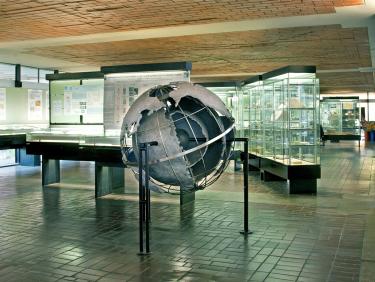
Institute of Earth Sciences

Institute
The overall objective of the geosciences is to understand the origin and development of the planet Earth from its formation about 4.5 billion years ago until today. The Earth's surface – and thus the human habitat – is constantly changed and reworked by complex interactions between the geosphere, the atmosphere, the hydrosphere and the biosphere. Geologic processes take place on extreme time scales – from picoseconds (as in chemical reactions on mineral surfaces) to billions of years (as in plate tectonics and biological evolution).

Research
Research at the Institute of Earth Sciences in Heidelberg focuses on the fields of solid earth (including mineralogy, petrology, isotope geology and sedimentology), cosmochemistry, environmental geochemistry, paleoenvironmental and paleoclimate research, paleontology and archaeometry.

Study
The Institute of Earth Sciences offers a comprehensive range of courses, with integration between coursework and the research conducted at the institute, especially during the higher semesters. This promotes an early involvement of students in the geoscientific professional landscape. The institute offers bachelor's and master's degree courses in "Geosciences".

Facilities
The Institute of Earth Sciences' focus is on the approach of investigating processes both qualitatively and quantitatively with the aid of state-of-the-art analytics. The high analytical competence of geoscientific research in Heidelberg is demonstrated by the 2014 commissioning of the national laboratory for secondary ion mass spectrometry.

Museum
The Institue of Earth Sciences' collection contains an utmost important find of mankind: the lower jaw of Homo heidelbergensis. The 610,000-year-old find was discovered in 1907 in a sand pit near Mauer by the sand pit worker Daniel Hartmann. In addition to the lower jaw, almost 6,000 fossils of vertebrates from the Warm Period in Mauer were discovered. These are individual bones of rhinoceroses, elephants, lions, hippos, bears and deer.



